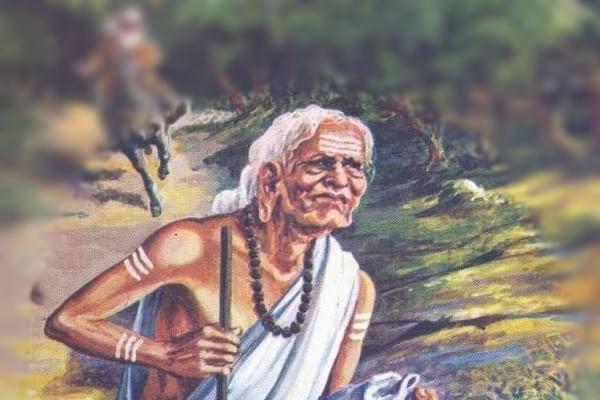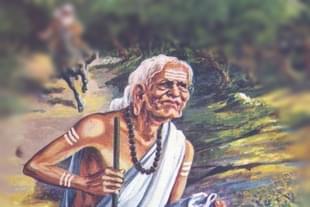Culture
Vinayagar Chaturthi: Celebrating The Enduring Cultural And Spiritual Significance Of Avvai
Aravindan Neelakandan
Sep 18, 2023, 11:41 PM | Updated Sep 19, 2023, 11:44 AM IST
Save & read from anywhere!
Bookmark stories for easy access on any device or the Swarajya app.


Ganesha, a cherished Divine figure of India, holds a special place in the hearts of all, particularly children, who adore Him alongside Krishna.
Known as the Lord of auspicious beginnings, Ganesha is a paradoxical figure. He posseses an elephant head and a pot belly, and yet, He rides a mouse.
Despite not having the physique of a Hercules or a six-pack abdomen, He is considered beautiful and handsome.
The love that a Hindu child holds for Ganesha is both simple and profound, encompassing all these aspects into their psyche.
There are numerous Puranic stories associated with Ganesha, each conveying a deeper truth than the other. His devotees, especially in southern Bharat, have also played a very important role in shaping the inner lives of generations of children in profound ways.
One such devotee is Avvaiyar.
Avvaiyar is a significant figure in the literary landscape of southern India. While there have been many Avvaiyars, the Hindu tradition has created a version of Avvaiyar that is more true-to-life than any historical dissection can reveal.
She was a poetess for both royalty and common people, an emissary of peace, a challenger to social discrimination, and a rebel against male dominance in scholarship.
Avvaiyar was also adept in Yogic mysticism and was the creator of probably the world's first exclusive, children's pedagogic literature that is still in use. She was an ardent devotee of Ganesha, or as He is called in southern India – Pillaiyaar (Divine child worthy of love and respect).
We first encounter Avvaiyar in Sangam literature where she expresses her love for peace and disdain for violent quarrels. She held the Vedic tradition dear to her heart and loved life. She could enjoy good arrack with a king, admired philanthropists and valour, and yet, sought peace.
Then we have another Avvaiyar who lived almost a thousand years ago. She wrote the most famous Aathichoodi – a primer to teach both Dharma and language to children. Arranged in the sequence of Tamil alphabets, Aathichoodi is what every Tamil child learns when they go to school.
Aathichoodi is both a name and an adjective. It is also an invocation. 'Aathi' is a flower of bidi shrub (Bauhinia racemosa) and Siva wears it. So He is the ‘One who wears Aathi flower’ which is what Aathichoodi means.
Here, it has two lines indicating the Deity whom Siva loves as a father, and it is Ganesha.
Thus, irrespective of religion, in Tamil Nadu every child spontaneously, naturally, without compulsion of any sort, starts their initiation into Tamil language with an invocation to Ganesha.
The first ethical seed sown in the heart of a Tamil child is ‘Arancheya Virumpu’, a call to ‘Be ever eager to do Dharma’. It begins as a simple act of charity, a tender sprout pushing through the soil of youthful innocence.
As the child matures, this seed of Dharma grows alongside, unfurling into a tree of righteousness, its roots reaching deep into the primordial essence of Rta.
Dharma is not merely charity. It is the embodiment of righteousness, the cosmic order that governs our universe. It is an ancient call to align one’s mind with this universal truth. Even in its simplest manifestation, such as giving alms to those in need, it is an exercise in humility, a practice of aligning one’s mind with Dharma without feeding one’s ego.
Such profound statements of Dharma get etched into the minds of children in alphabetical order, a testament to the genius of Avvai.
Scholars and spiritual seers have penned commentaries on this work, each adding their unique flavour to this timeless wisdom.
Recently, in the 20th century, none other than Rajaji wrote a commentary on Aathichoodi, and even the great poet Bharathi offered his own version – an imitation of Aathichoodi.
All these bear witness to the enduring value contained within Avvai’s work, a beacon that continues to guide generations.
She has also written two more similar works, Kontrai Venthan and Moothurai which also impart Dharma to children. Modern child literature writers should look into the way Avvai immortalized her work for children and should incorporate the principles she used.
Another remarkable socio-mystical literary phenomenon to Avvai is the Vinayakar Agaval, which is steeped in deep mysticism and lyrical grandeur.
This profound poem, believed to have been composed by a different Avvai who lived approximately five centuries ago, is a cherished treasure in traditional Saivite households. It is almost a literary rite of passage for most children to commit this poem to memory mostly before their eighth birthday.
The Vinayakar Agaval is not merely a poem; it is a complex tapestry of Yogic teachings and experiences. It commences with Murthy Dhyana, a vivid depiction of the divine form of Ganesha.
The poem then transcends into the realm of the ineffable, describing Ganesha’s Gnostic form as ‘the one who surpasses words and their meanings, embodying the true Gnosis of Turiya state of consciousness, all while bearing an astonishing elephant form’.
The hymn seamlessly transitions into Bhakti, expressing an intimate connection with the divine: ‘You are present here and now, as my own mother, bestowing upon me wisdom’.
It further unveils some of the most esoteric aspects of yogic sadhana. For instance, it elucidates on the Ajapa Mantra that is inextricably intertwined with Kundalini: ‘… By clearly revealing the Ajapa Mantra that is perpetually integrated with Kundalini, (Oh Ganesha you demonstrate) how the fire kindled from Muladhara can ascend through breath and elucidate the journey through Sushumana-ambrosia, Surya and Chandra pathways (within)…’ And remember these lines get imprinted into the memory pathways of an eight-year-old child.
This timeless piece of literature serves as a testament to Avvai’s spiritual insight and poetic prowess.
Behold dear reader.
The wisdom herein, would have been persecuted and destroyed in most cultures. Elsewhere it would have been shrouded in secrecy and traditionally reserved for a very few among those on the loftiest of spiritual quests.
Yet, in Bharat, even children of a tender age can recite these profound lines.
This is due to Sanatana Dharma democratising access to such profound mystical knowledge.
Ganesha and His quintessential devotee, the poetess Avvai - an archetypal figure embodying wisdom that defies historical dissections - are among its most potent forces in southern Bharat. It was not at all coincidence that when E.V.Ramaswamy, the ideologue of Dravidianism, undertook a project of idol-breaking, he targeted the vigrahas of Ganesha.
So as we celebrate Ganesh Chaturthi, it may be an opportune moment to recommit ourselves to Avvai’s mission: to take the Dharma eternal to every child on the planet.




